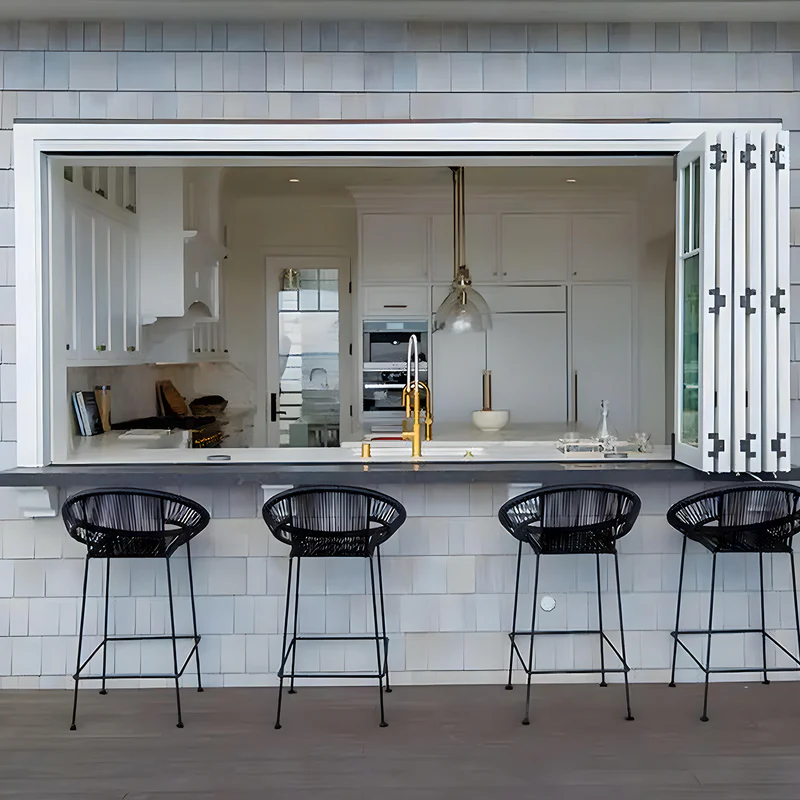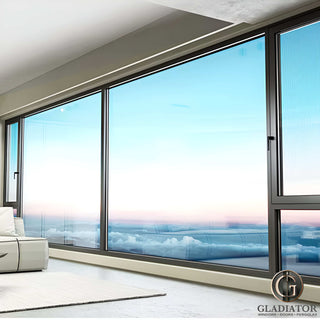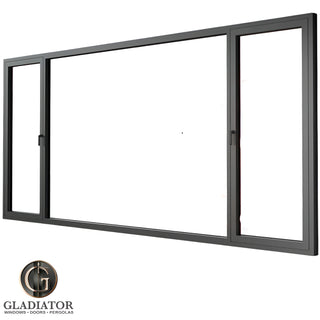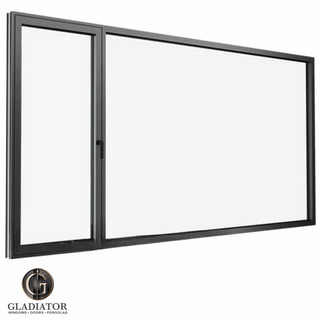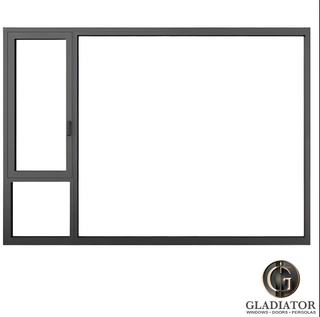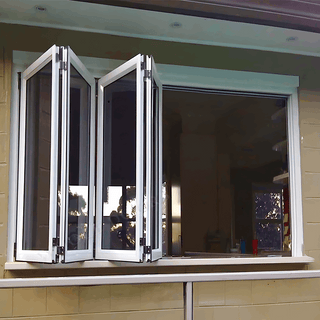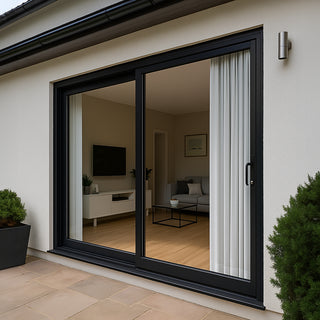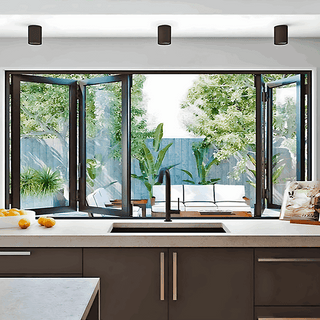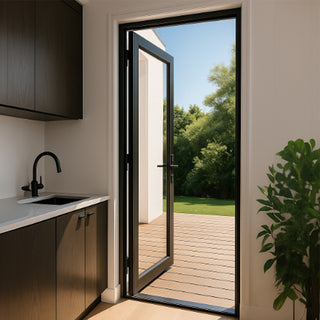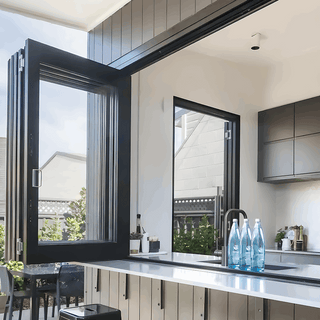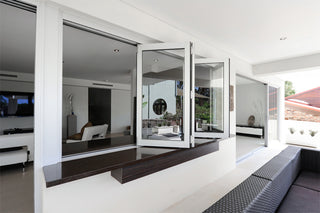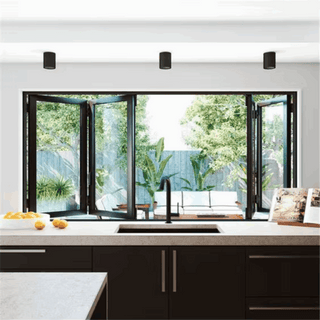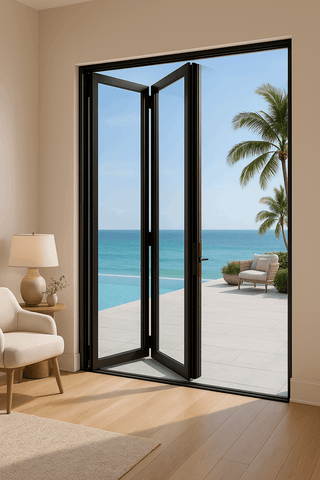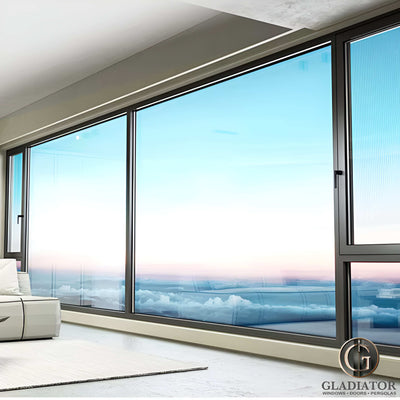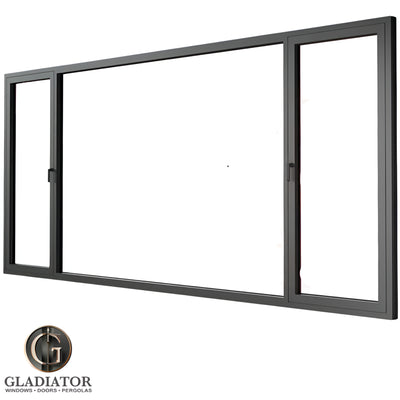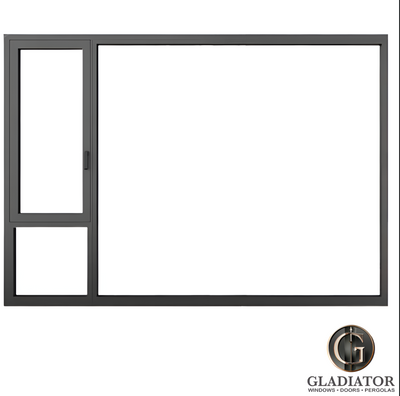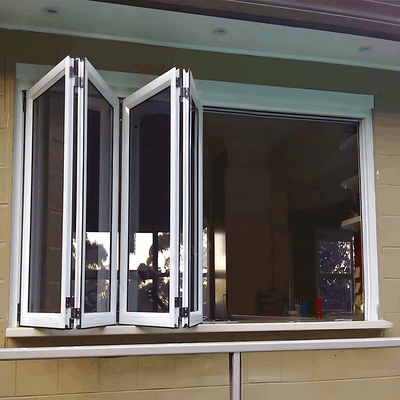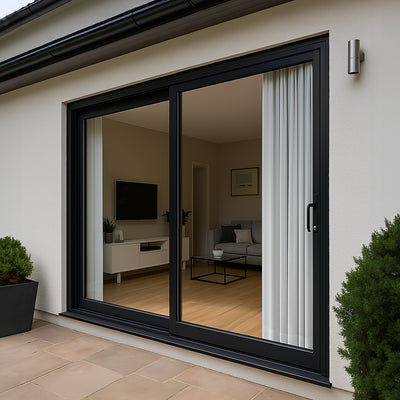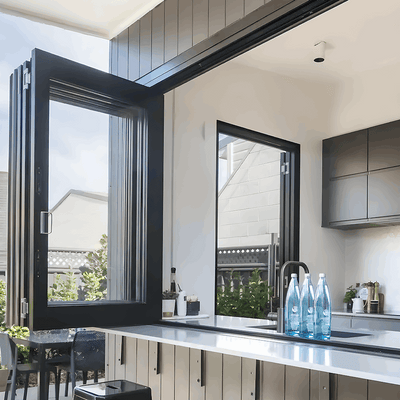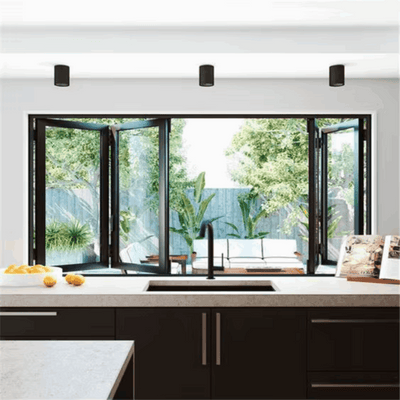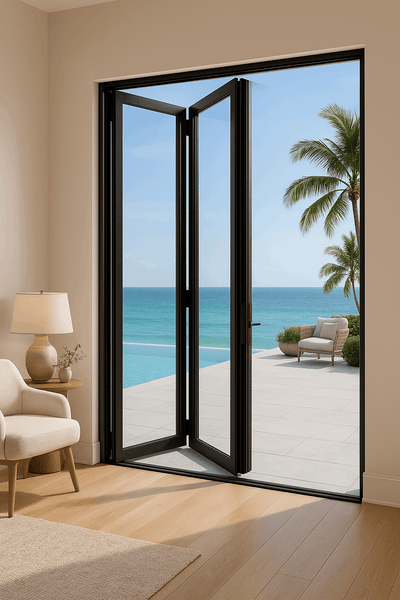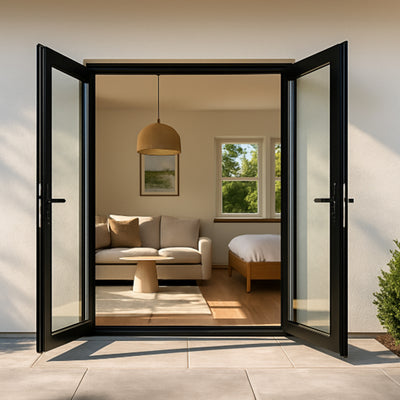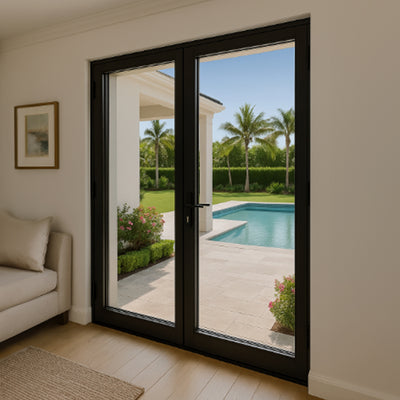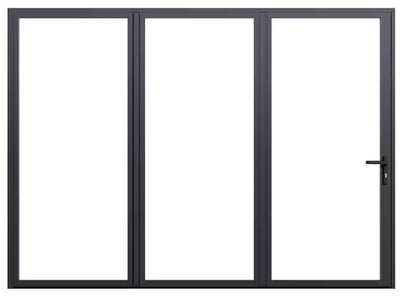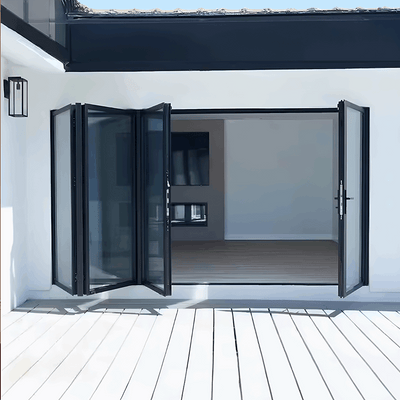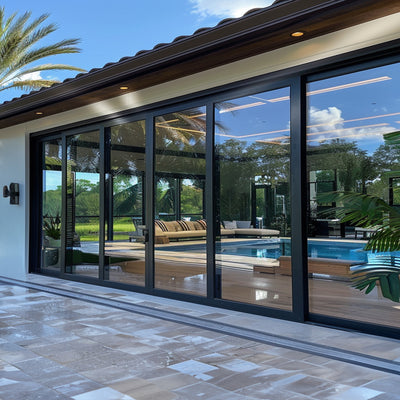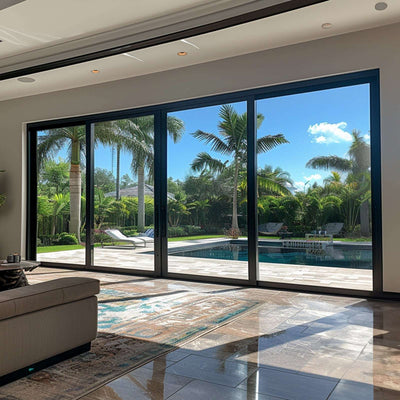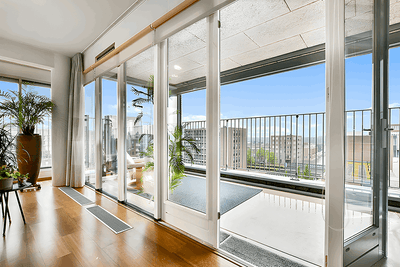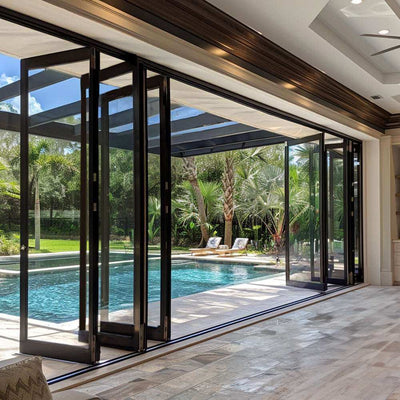The Science Behind Window Condensation
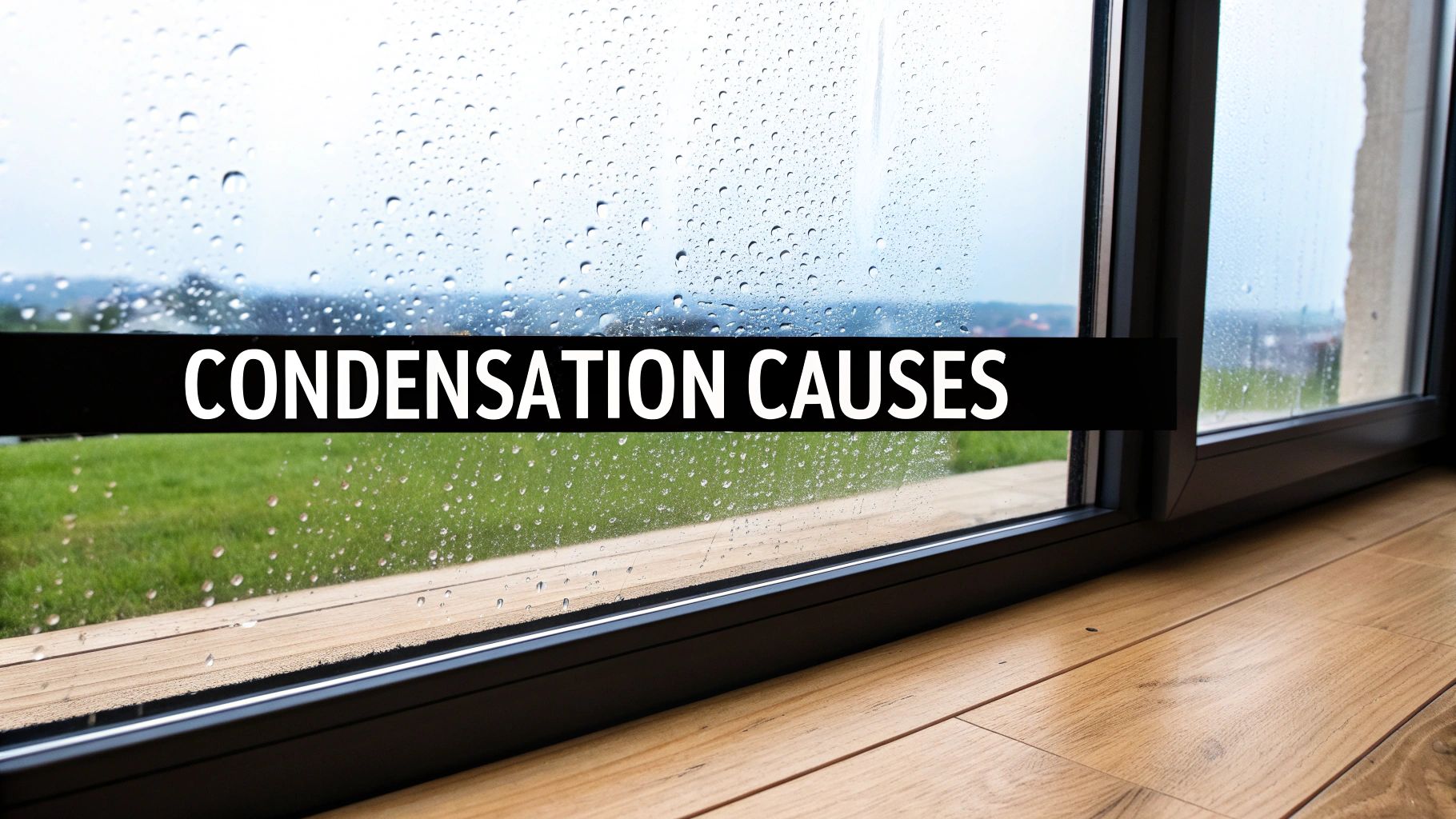
Window condensation, that film of water on your glass panes, is more than just an eyesore. It's a visible demonstration of the dew point: the temperature at which air can no longer hold its water vapor. The excess moisture then transforms into liquid water. A sweating glass of iced tea on a humid day is a perfect example.
The same principle applies to your windows. Warm, humid indoor air contacts the cooler window surface, causing the air near the glass to cool. If this air cools to its dew point, the excess moisture condenses on the window. This means condensation is more frequent in colder weather due to larger temperature differences between indoors and outdoors.
Understanding the Factors at Play
Several factors contribute to the amount of condensation on your windows. One major factor is indoor humidity. Higher humidity means more moisture in the air, increasing the chance of hitting the dew point and forming condensation.
Everyday activities like showering, cooking, and drying clothes indoors add significant moisture to the air. Cooking, for example, can add approximately 4.5 pounds of moisture daily.
To minimize condensation, consider shorter, cooler showers, venting clothes dryers outdoors, and using humidifiers less during cold months. For more information, check out the Moisture Condensation of Windows Fact Sheet.
Another key factor is the temperature difference between the indoor air and the window surface. A greater difference leads to faster cooling and condensation. This is why single-pane windows, which offer less insulation, are more prone to condensation. For information on higher-quality window options, you might find the Gladiator Windows and Doors Site Map helpful.
Finally, air circulation plays a significant role. Poor circulation allows humid air to stagnate near cold surfaces, promoting condensation. Good ventilation helps distribute moisture evenly, preventing it from concentrating around windows. Understanding these factors helps you combat condensation and keep your windows clear.
Hidden Dangers: Why Moisture Is More Than An Annoyance

That harmless-looking condensation on your windows might be signaling a much bigger problem. More than just a foggy view, this moisture can indicate issues that impact both the health of your family and the structural integrity of your home. Let's delve into these often-overlooked dangers.
Respiratory Health Risks
Constantly damp windows from condensation create a prime breeding ground for mold and mildew. These fungi release spores into the air, which can trigger allergies and worsen respiratory problems like asthma. Children and those with sensitivities are especially vulnerable.
One study even showed a 40% increase in asthma symptoms in children exposed to dampness and mold. This underscores the importance of addressing window condensation to maintain healthy indoor air quality.
Structural Damage: A Silent Threat
Beyond the immediate health risks, prolonged exposure to moisture can wreak havoc on your home's structure. Wood rot, a frequent consequence of persistent dampness, can significantly weaken the framework of your house. Moisture can also damage insulation, making it less effective and leading to higher energy costs. For more information about improving your home's efficiency, check out our article about window and door options.
The Cost of Ignoring Condensation
Ignoring window condensation can hit your wallet hard. Repairing moisture-related structural damage can be a major expense. Replacing rotted window frames, for instance, can cost anywhere from $500 to $1,500 per window. Extensive mold remediation can easily run into the tens of thousands of dollars. Clearly, preventative measures are far more economical than dealing with costly repairs down the road.
Identifying Vulnerability: Home Design and Materials
Some homes are simply more prone to moisture problems due to their design and building materials. Homes with poor ventilation or located in humid climates are particularly at risk. Certain materials, like drywall, absorb moisture more readily than others, like concrete.
Understanding your home’s specific vulnerabilities is key to taking the right preventative steps. Regularly inspect windows, walls, and ceilings for any signs of moisture or mold. Implementing good ventilation strategies and controlling indoor humidity are essential for protecting your home from the hidden dangers of condensation.
Mastering Indoor Humidity: Your First Line Of Defense

Controlling the moisture level inside your home is the most effective way to prevent window condensation. It isn’t as easy as simply plugging in a dehumidifier—you need to understand the ideal indoor humidity levels and adopt practical steps to keep them steady.
Understanding Optimal Humidity Levels
Keeping the right balance of moisture intracellularly not only boosts comfort but also reduces condensation. In most homes, humidity should fall between 30% and 50%. This range can shift according to seasonal changes and local climate conditions. For instance, during colder months, maintaining levels near 30% is often recommended to minimize condensation on cold window surfaces.
In colder climates, even a humidity reading within the typical range might cause condensation because cold window panes are more prone to reaching dew point. In warmer areas, a slightly higher reading can feel more comfortable; however, you should still be watchful for sudden temperature changes that might trigger condensation.
Practical Humidity Control Methods
Maintaining the ideal humidity level often takes a mix of techniques. One key method is using a dehumidifier, especially in areas that tend to accumulate moisture, such as basements. Equally important is proper ventilation—this means running exhaust fans in kitchens and bathrooms and ensuring good circulation throughout the home. Even the simple habit of opening a window for a few minutes each day can help.
Additionally, it is crucial to control activities that produce extra moisture. Consider how much moisture is introduced when you shower, cook, or dry laundry indoors. Adjustments like taking shorter showers, keeping lids on pots when cooking, and venting clothes dryers outdoors can significantly lower indoor humidity and reduce window condensation.
The Role Of Ventilation And Moisture-Producing Activities
Good ventilation is a constant part of managing indoor humidity, and your approach might need to shift with the seasons. In winter, you must balance removing excess moisture with retaining heat, while in summer, outdoor air may cool the home at the cost of bringing in additional humidity.
It is also important to understand the impact of everyday moisture-producing activities. For example, drying clothes indoors can add up to 5 liters of moisture daily, while cooking may contribute another 2-3 liters. Keeping these numbers in mind helps you adjust your daily habits. Here are a few suggestions:
- Run the exhaust fan for a longer duration when cooking.
- Open windows briefly after showering.
- If possible, dry clothes outside or use a dryer vented outdoors.
Before moving to the next section, review the following table that breaks down common household activities and their moisture contributions.
Below is the table titled "Daily Household Activities and Their Moisture Contribution," which shows how much moisture everyday tasks add to your indoor air, helping you pinpoint the biggest culprits behind window condensation.
| Activity | Approximate Moisture Added | Reduction Strategies |
|---|---|---|
| Showering | 3-4 liters | Take shorter showers; use exhaust fans to quickly remove moisture |
| Cooking | 2-3 liters | Use lids on pans; run kitchen exhaust during cooking |
| Drying Clothes Indoors | 5 liters | Dry laundry outdoors or vent clothes dryer outside |
The table above summarizes the main contributors to indoor moisture and offers practical tips for reducing their impact.
Leveraging Technology And Addressing Challenging Spaces
Modern tools make monitoring and controlling indoor humidity more straightforward. Hygrometers—readily available and affordable—can measure the moisture level in your home accurately. Many dehumidifiers now come equipped with built-in hygrometers and automatic settings, easing the effort required to maintain optimal humidity.
Challenging spaces, such as basements, sunrooms, or older homes, may require additional attention. Basements benefit from both dehumidifiers and improved ventilation, while sunrooms, prone to temperature shifts, need carefully managed humidity and temperature. In older homes, where ventilation might be lacking, installing retrofitted vents or similar enhancements can be crucial. By applying these techniques, you can successfully manage indoor humidity and keep window condensation under control for a healthier living space.
Window Solutions: From Budget Fixes to Premium Upgrades

When controlling indoor humidity isn't enough, it might be time to look at your windows. This often means weighing temporary fixes against the cost of full replacements. Sometimes, a simple DIY window insulation kit can offer a surprisingly effective short-term solution. But for lasting comfort and efficiency, upgrading to high-performance windows is the best long-term strategy.
Evaluating Window Options
A practical first step is to assess your current windows. Temporary fixes, such as applying insulation film, can help minimize drafts and reduce condensation, at least for a while. For a more robust and permanent fix, however, window experts recommend exploring advanced glazing technologies.
High-performance window systems—those with double or triple glazing, low-emissivity (low-e) coatings, and insulating gas fills (like argon or krypton)—typically offer U-factor ratings between 0.20 and 0.30 BTU/hr·ft²·°F. Older, single-pane windows, by contrast, can have U-factors exceeding 1.0. This significant difference highlights the effectiveness of modern windows in reducing or even eliminating window condensation, particularly in colder climates. A study published in Facade Tectonics explores this topic in more detail.
Key aspects to consider when evaluating windows include:
- Spacer Materials: Even seemingly small details, like the material used for the spacer in the window frame, can significantly impact condensation resistance.
- Glass Coatings: Modern low-e coatings help reflect interior heat back into the room, keeping the window surface warmer and reducing condensation.
- Fill Gases: Inert gases like argon or krypton between the panes of glass provide additional insulation, further helping to maintain a balanced temperature across the window and minimize condensation.
To help illustrate the differences between window types, we've compiled the following comparison table:
Window Types Comparison for Condensation Prevention
| Window Type | U-Factor Range | Condensation Resistance | Relative Cost | Effectiveness Rating |
|---|---|---|---|---|
| Single-Pane | > 1.0 | Low | Low | 2/5 |
| Double Glazing | 0.35 - 0.50 | Moderate | Moderate | 3/5 |
| Premium Double/Triple | 0.20 - 0.30 | High | Higher | 5/5 |
This table clearly shows how premium double or triple-glazed windows offer superior condensation resistance compared to single-pane or standard double-glazed options. While the initial cost is higher, the improved performance often translates to long-term energy savings and increased comfort.
Moving Forward With Informed Decisions
When selecting new windows, it’s essential to consider the long-term return on investment. Upgrading to more energy-efficient windows can significantly reduce heat loss, leading to noticeable savings on energy bills over time. For additional tips on reducing moisture and preventing condensation, exploring general energy efficiency tips can be beneficial.
For more in-depth information about window improvements and a guide to assessing your specific needs, check out our comprehensive resource on How to Master Window Solutions. Balancing short-term fixes with long-lasting window upgrades empowers you to enjoy clear, condensation-free windows year-round.
Quick-Win Strategies for Immediate Moisture Relief
Dealing with window condensation can be a frustrating experience, especially when you're looking for a fast solution. While long-term fixes are essential, these quick-win strategies can provide immediate relief and help prevent further moisture buildup. These tactics work within hours, offering a temporary fix while you plan more permanent solutions.
Addressing Existing Condensation
If you already have condensation on your windows, acting quickly can prevent potential damage. One simple yet effective method is wiping down the affected areas with a dry cloth. This immediately removes the moisture, preventing it from pooling and potentially damaging window frames or sills. Another surprisingly effective trick involves rubbing a small amount of dish soap onto the windows with a dry cloth. This creates a thin, invisible barrier that repels water, further preventing condensation. You can also try a thin layer of Vaseline on your windows, which similarly acts as a moisture barrier.
Enhancing Air Circulation for Rapid Results
Improving air circulation is another way to significantly reduce condensation. Even a small fan pointed at the window can make a big difference. The increased airflow disrupts the stagnant, humid air near the glass, preventing the temperature from dropping to the dew point. For instance, a small desk fan on a windowsill can significantly decrease condensation formation. This quick fix is especially helpful in humid areas like kitchens and bathrooms. Opening windows, even briefly, can also quickly exchange humid indoor air with drier outdoor air.
Commercial Product Evaluation: Separating Fact from Fiction
Many commercial products claim to combat window condensation, but their effectiveness varies. Moisture absorbers, often containing calcium chloride, can draw moisture from the air in smaller, enclosed spaces. However, they may not be as effective in larger rooms. Temporary insulation films, applied directly to the window, create an additional layer of insulation, increasing the inner glass surface temperature and reducing condensation. While effective, these films can be tricky to apply neatly and may not be aesthetically pleasing. For more long-term solutions, you might be interested in: How to master window and door options.
Room-Specific and Seasonal Adjustments
Certain rooms, like kitchens and bathrooms, generate more moisture than others. Using exhaust fans during and after showering and cooking is crucial. During colder months, keeping interior doors closed can contain moisture in these high-humidity areas, preventing it from spreading and condensing on windows. In warmer, drier months, opening windows can significantly reduce humidity. This seasonal adjustment lets you take advantage of natural ventilation when it's most effective.
By implementing these quick-win strategies, you can immediately address window condensation and enjoy clearer views while working towards more permanent solutions. These simple yet effective tactics offer a proactive approach to managing moisture and maintaining a comfortable, condensation-free home.
When to Call the Professionals (And Who to Call)
Persistent window condensation can be a real nuisance, sometimes sticking around even after you’ve tried all the DIY tricks. Knowing when to bring in the pros, and more importantly, which pro to call, can save you time, money, and future headaches. This section will guide you through assessing your condensation situation and finding the right expert.
Identifying the Root Cause: Window or Whole-House Issue?
The first step is figuring out where the condensation is coming from. Is it just a few windows? This might point to a window-specific issue, like poor insulation or bad seals. Or is it a bigger problem affecting lots of windows? That could mean high humidity inside or poor ventilation throughout your house. This difference helps you decide whether you need a window specialist or a broader building professional, such as an HVAC technician or a building envelope expert. For instance, if you feel drafts around certain windows, a window installer might be your best bet. But if you see condensation everywhere, and maybe even mold in other areas, you’ll likely need a broader assessment from a different kind of pro.
Diagnostic Tools and Expert Assessments
Professionals use specialized tools to find moisture problems that a homeowner might miss. Thermal imaging cameras, for example, can spot heat loss and hidden moisture inside walls or around windows. Moisture meters accurately measure the moisture content of building materials, identifying problem areas. Knowing about these tools helps you evaluate how thorough a professional’s assessment is and makes sure their recommendations actually address the issues.
One simple way to lower humidity and condensation is to keep surfaces like mirrors clean. Learn more about cleaning your mirrors. You can also find out how to stop window condensation with window upgrades in our guide on high-performance window systems.
Evaluating Quotes and Avoiding Unnecessary Expenses
When you get quotes, review them closely to understand what's included. Watch out for complicated or pricey solutions that might not be necessary. Replacing every window when better ventilation and lower indoor humidity would do the trick is a classic example of overspending. Ask specific questions about the diagnosis, the proposed solution, and the expected outcome. Here are some key questions:
- What diagnostic tests did you perform, and what were the results?
- Why is this the best solution for my situation?
- Can you provide references from past clients with similar problems?
- What kind of warranty comes with the work?
Red Flags and Signs of Poor Expertise
Be careful of contractors who offer quick fixes without a proper assessment or who brush off your concerns. A contractor pushing for full window replacement without considering other possibilities might not have your best interests in mind. Other red flags include missing licenses or insurance, bad online reviews, and pushy sales techniques. Choose a reputable, experienced professional who takes the time to understand your needs. This is essential for getting effective and long-lasting results.
Ready to Upgrade Your Windows and Eliminate Condensation?
Gladiator Window and Doors offers a wide selection of high-quality, energy-efficient windows designed to fight condensation and make your home more comfortable. Our expert team can help you find the perfect windows for your needs and budget. We provide professional installation and a best-in-industry warranty. Visit us today for a free consultation and see the difference quality windows can make. We specialize in extra-large sliding doors, pivot doors, bi-fold doors, panoramic doors, and folding windows, plus fully loaded pergolas. Get massive doors at a fraction of the cost with our Best Offer Guarantee – the lowest prices in the USA!









